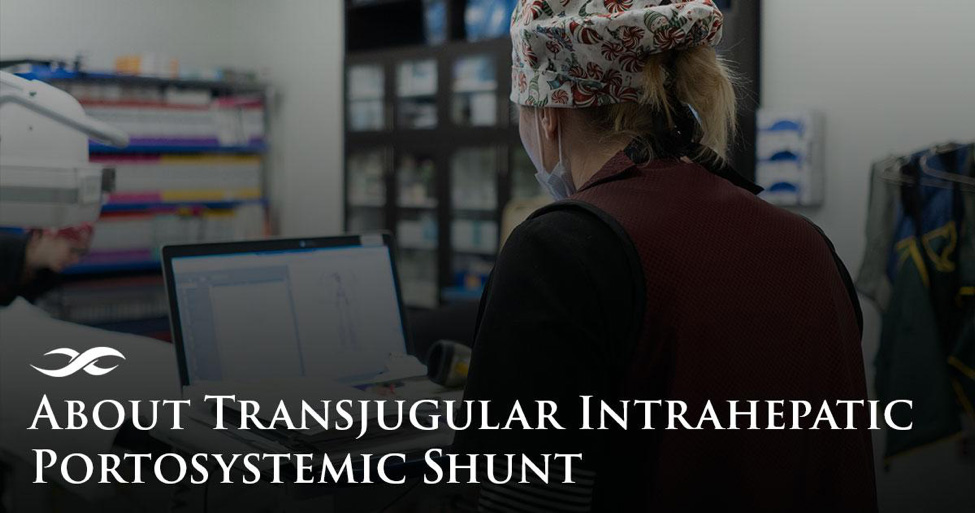About Transjugular Intrahepatic Portosystemic Shunt

A transjugular intrahepatic portosystemic shunt (TIPS) is a minimally invasive procedure to connect two veins in the liver. This procedure is typically performed on patients with portal hypertension, or increased pressure in the portal vein system. A buildup of pressure in this area can cause blood to flow back from the liver into veins in the stomach, lower esophagus, and intestines.
TIPS connects the portal vein to the hepatic vein in the liver, utilizing a stent to keep the connection open. This reroutes blood draining from the bowel to return to the heart while avoiding the liver, preventing any backflow of blood and reducing high blood pressure in the portal vein.
Common Conditions Treated
As mentioned above, TIPS is typically used to treat patients with portal hypertension. Common causes of portal hypertension include:
- Cirrhosis (liver scarring caused by alcohol use)
- Hemochromatosis (too much iron in the liver)
- Hepatitis B or C
This procedure is also used to treat the complications of portal hypertension, including:
- Variceal bleeding (bleeding from veins that drain the stomach, esophagus, or intestines into the liver)
- Portal gastropathy (engorged veins in the wall of the stomach)
- Severe ascites (accumulation of fluid in the abdomen)
It should be noted that TIPS may not be recommended for patients with advanced liver disease.
Transjugular Intrahepatic Portosystemic Shunt Procedure
TIPS is typically performed as an outpatient procedure that generally takes 1-3 hours to complete. To begin the procedure, the patient will be given both a moderate sedative and local anesthetic. After a very small incision is made, your physician will utilize x-ray imaging to guide a catheter toward the liver and into one of your hepatic veins.
Once the catheter is positioned in the vein, your physician will measure the pressure in the hepatic vein to determine the severity of the condition. Using a contrast for additional guidance, your physician will use a TIPS needle to gain access to the portal vein. They will then place a stent between the hepatic and portal veins. When the stent is in the correct position, your physician will use an inflatable balloon to expand the stent into place.
After the stent has been expanded, your physician will deflate the balloon and remove the catheter. They will then measure the pressure to confirm a decrease in portal hypertension. Additional venograms may be ordered to ensure there is satisfactory blood flow through the TIPS.
Recovery from Transjugular Intrahepatic Portosystemic Shunt
Following your procedure, you will return to your suite. There, you will be monitored closely and will be asked to keep your head elevated for a few hours. Patients are usually able to resume normal activities 7-10 days after the procedure. Patients should expect frequent follow-up ultrasounds to ensure the stent is still allowing blood to flow through.
Call (605) 217-5617 to schedule an appointment with one of our physicians.
